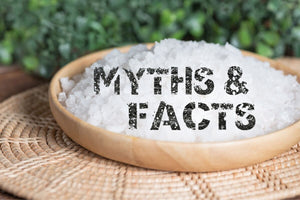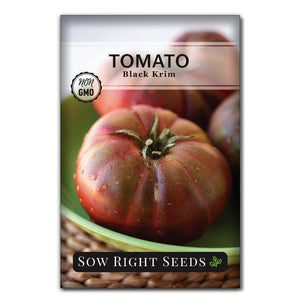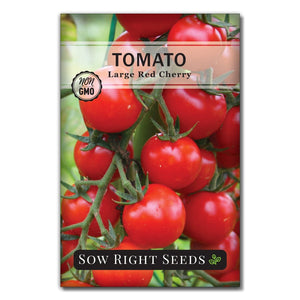Vine Ripened vs Breaker Stage - When to Pick a Perfectly Ripe Tomato
TomatoesI love biting into a warm, juicy tomato on a summer day. There’s nothing that compares to that vine-ripened flavor. I don’t even bother making a BLT unless I have an heirloom tomato picked at its peak of ripeness.
But how long does a tomato need to stay on the vine to be considered vine-ripened? And if that’s the way to get the best flavor, why do some gardeners pick them before they are 100% ripe?

Quick Links:
Understanding Tomato Ripeness
If you’re like me, you’re growing tomatoes so you can enjoy them at their peak flavor. You probably have your favorite varieties you grow because of their unique flavor. Those different tomato flavors are what you can’t get from a standard grocery store variety.
So, when is a tomato at the peak of perfection? Do you have to wait for it to fully ripen on the vine?
Each gardener has their reasons for choosing to harvest at a particular time, ranging from flavor and texture preferences to protection from pests.
What happens to the flavor and texture as a tomato ripens? And does vine ripening make a difference?

From Green to Ripe - What Happens
No matter what variety you grow, all tomatoes start out green. However, some varieties turn yellow, others black, and some stay mostly green. Heirloom varieties can be tricky to determine when they are ripe. It took me a while to figure out when to pick my Green Cherokee tomatoes.
You don’t want to pick tomatoes when they’re still green. This is why grocery store tomatoes are so tasteless. They’re picked when green and then placed in rooms with ethylene gas to speed up their ripening. Green tomatoes at this stage will be hard and not as juicy and flavorful as they could be.
Once a tomato has grown to its maximum size, it begins to change color. This first blush of color is called the “breaker stage.” At this stage, you will watch for the peak of ripeness.

What Is the Breaker Stage?
The breaker stage is when the tomato is mature and starting to change color. This can be a yellow, pink, or orange blush depending on the variety. You’ll want to have a good color photo of what your mature tomato should look like.
This color change will start at the blossom end of the fruit and move up. At this stage, the tomato will produce its own ethylene gas and begin softening. The change in color means the carotenoids and lycopene are developing. Those are what make tomatoes healthy for us to eat!
When a tomato reaches its maximum size and develops its first blush of color, the plant stops sending nutrients to the fruit. At this point, the tomato has everything it needs to continue ripening. It won’t get any bigger, but it will change color. A layer of cells creates a barrier. So adding more fertilizer, etc, isn’t going to have an effect. However, this barrier still allows water through. That’s why too much water at this point can make your tomatoes split.
Any time after this breaker stage, you can pick tomatoes and allow them to fully ripen indoors. Many farmers consider tomatoes harvested at this stage to be vine-ripened.
While there is debate about it, most people do not notice any difference in taste with tomatoes that have finished ripening indoors when they are picked after the breaker stage. I’ve noticed a slight difference with some varieties of tomatoes. Some varieties become a little sweeter if left on the vine for longer. When you grow your own tomatoes, you'll have plenty of opportunities for a taste test.


The Striped Paste Tomato on the left has enough blush to be picked.
When Should You Pick Your Tomatoes?
Pick at the Breaker Stage When . . .
You can’t get to your garden daily. When you’re going to be away from your garden for a few days, it’s okay to pick tomatoes before they are all the way red. When you have an allotment or community garden space, you can’t always get there at the perfect moment. You’ll get a better harvest that can ripen up indoors.
You don’t want to fight the squirrels. I hate it when I’ve got my eye on a ripening tomato and find it missing the next day. If you’re competing with the squirrels, it’s worth picking your tomato a day early. I’ve even had a snake sink its fangs into a tomato. I don’t know if the color was an issue.
Avoid sunscald. In sunny locations where leaves do not shade the fruit, you can get too much sunshine.
There’s a storm coming. Heavy rain and hailstorms are common in the Midwest, and there are times when those breaker-stage tomatoes are safer indoors. A heavy rainstorm can also make already mature tomatoes split.
It’s the end of the season. The day before the first fall frost, I harvest all my tomatoes and bring them inside. I’ll clip the whole branch of cherry tomatoes and leave them on the countertop to ripen.
When you bring tomatoes inside to ripen, place them on the shoulders or the stem end. This reduces rot and water loss.

Pick Fully Vine-Ripened When . . .
You can check on your plants daily. If you want to pick a tomato off the vine at the perfect moment, you’ll want to check on it daily.
Pest pressure is low. When your garden isn’t susceptible to critters such as birds and squirrels that are also waiting for your tomatoes to ripen, you can wait to pick them.
Peak flavor is your ultimate goal. You want peak flavor and the satisfaction of a garden-to-table experience. Some people say they can taste the difference.


When Is It Too Early or Too Late?
-
Too early:
Tomatoes are all the way green and hard. If you pick your tomatoes too early, they won’t ripen as well. And the taste that you’re aiming for will be missing.
-
Too late:
The tomatoes are fully colored and starting to get mushy. When you pick tomatoes too late, they can be a little too mushy. They can also split, get eaten, and fall off.

How to Ripen Tomatoes Indoors
Tips for Ripening Off the Vine
Place tomatoes on the counter or windowsill (it’s about warmth, not light). Any temperature between 65-85ºF will allow them to continue ripening. Temperatures outside of this range slow down the ripening process.
Store tomatoes stem-side down to reduce bruising and rot. There’s some debate about this, but as long as I don’t cart them around, they’re fine.
Use a paper bag or cardboard box to trap ethylene gas.

Harvesting Tomatoes FAQs
Do tomatoes continue to ripen in the fridge?
No, cold temperatures will stop tomatoes from ripening. I also think that tomatoes stored in the fridge have a weird texture, which scientists call mealy. I never put tomatoes in the refrigerator unless they are already cut.
Should I ripen tomatoes in the dark or light?
Once they’ve reached the breaker stage, light is no longer necessary for tomatoes to continue ripening.
How long does it take for tomatoes to ripen indoors?
It usually takes 3 to 7 days. This will depend on how ripe they were when picked and the indoor temperature.

I prefer to let my tomatoes ripen on the vine. But I’m also okay with picking them when they are a little bit beyond the breaker stage. I wait until they have most of their mature color. When I see a tomato that looks almost perfect, it's time to bring it inside before it becomes food for someone else!
Now that you know the science behind how tomatoes ripen, you can decide when it’s time to pick your tomatoes. It’s your garden. Your rules.
Happy Harvesting!
Sources:
Is This Tomato Ready to Harvest?








Leave a comment